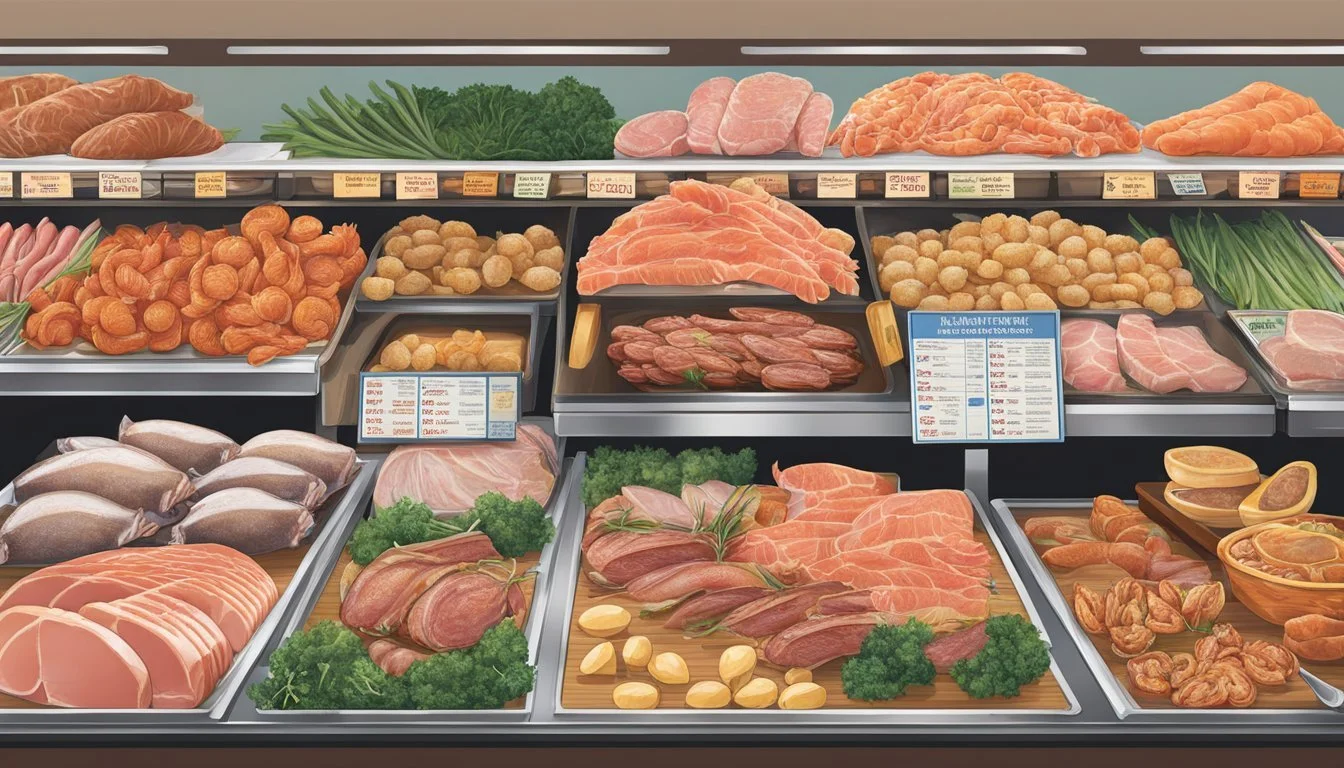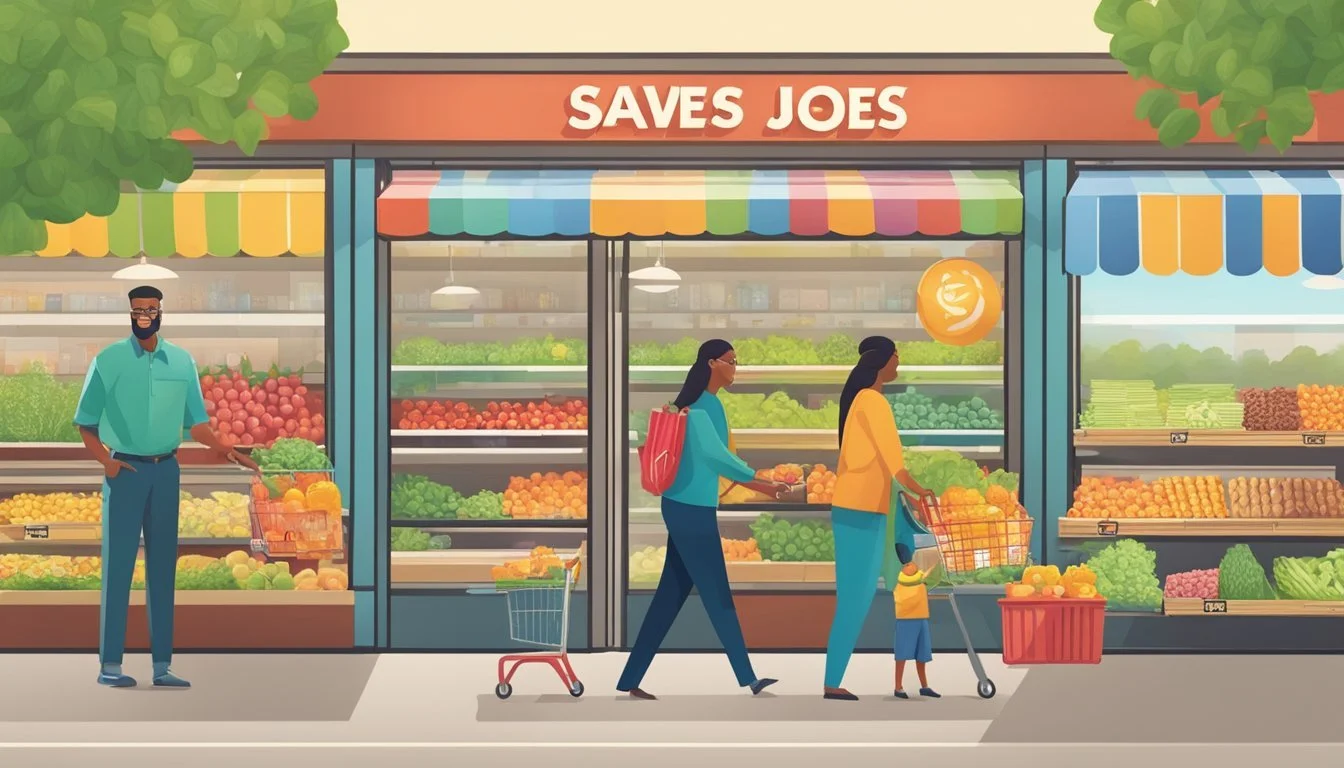Save Mart vs Trader Joe's
A Comprehensive Comparison of Price, Quality, and Selection
Grocery shopping is a regular task for most consumers, with many options available to meet their needs. Save Mart and Trader Joe's are two popular choices that offer distinct shopping experiences. While both stores aim to provide quality products, they differ in their approach to pricing, selection, and overall atmosphere.
Trader Joe's tends to be more expensive than some other grocery stores for many basic items, but offers unique products and a curated selection that appeals to certain shoppers. Save Mart, on the other hand, focuses on providing a wide range of products at competitive prices. The choice between these two stores often comes down to individual preferences and priorities.
Consumers may find that their shopping habits and dietary needs influence which store better suits them. Save Mart typically offers a larger selection of mainstream brands and conventional produce, while Trader Joe's is known for its store-brand items and specialty products. Understanding these differences can help shoppers make informed decisions about where to purchase their groceries.
Comparison of Store Brands and Products
Save Mart and Trader Joe's offer distinct approaches to store brands and product selection. Their strategies differ in quality, variety, and focus on organic options.
Store Brand Quality and Selection
Save Mart's store brand, Market Essentials, provides a range of everyday items at competitive prices. These products cover basic grocery needs but may not stand out in terms of uniqueness or quality.
Trader Joe's, on the other hand, is renowned for its extensive private-label products. Over 80% of Trader Joe's items are store brand. These products often receive high praise for their quality and innovative flavors. Trader Joe's frequently introduces new items, keeping their selection fresh and exciting for customers.
Exclusive Products and Organic Options
Save Mart carries a mix of national brands and their own store brand. Their organic selection is growing but remains limited compared to specialty retailers.
Trader Joe's excels in offering unique, exclusive products. Many items can only be found at Trader Joe's, creating a loyal customer base. Their organic options are extensive, covering produce, dairy, snacks, and prepared foods. Trader Joe's organic produce is competitively priced, making it accessible to a wider range of shoppers.
Trader Joe's also stands out with its array of prepared foods, many of which are organic or made with organic ingredients. These convenient options cater to health-conscious consumers seeking quick meal solutions.
Price and Value Comparison
Save Mart and Trader Joe's offer distinct pricing strategies and product selections. Both stores aim to provide value, but their approaches differ in key ways.
Everyday Prices and Discounts
Save Mart focuses on competitive everyday pricing and frequent sales. They often use loss leaders to draw customers, offering staples like milk and eggs at reduced prices. Save Mart's weekly ads feature numerous discounts across departments.
Trader Joe's takes a different approach. They maintain consistent low prices without sales or coupons. Their strategy relies on efficient operations and a curated product selection to keep costs down. Trader Joe's private label items typically offer good value compared to national brands.
Comparison of Common Grocery Items
A price comparison of common items reveals some differences:
Bananas: Save Mart $0.69/lb, Trader Joe's $0.19 each
Milk (1 gallon): Save Mart $3.99, Trader Joe's $3.29
Peanut butter (16 oz): Save Mart $2.99, Trader Joe's $1.99
Cereal (12 oz): Save Mart $3.49, Trader Joe's $2.99
Save Mart often has lower prices on produce and meat. Trader Joe's tends to be cheaper for packaged goods and specialty items. Ground turkey and maple syrup are typically less expensive at Trader Joe's.
The best value depends on shopping habits. Save Mart's sales can lead to significant savings for savvy shoppers. Trader Joe's consistent pricing appeals to those who prefer straightforward shopping without chasing deals.
Quality and Freshness of Produce
Save Mart and Trader Joe's offer distinct approaches to produce quality and freshness. Both stores strive to provide customers with appealing fruits and vegetables, but their selection and sourcing methods differ.
Comparison of Fruit and Vegetable Freshness
Save Mart emphasizes locally-sourced produce when possible, which can result in fresher fruits and vegetables. Their larger store format allows for a wider variety of conventional produce options.
Trader Joe's, known for its unique offerings, often provides pre-packaged fruits and vegetables. This packaging can help maintain freshness but may limit customers' ability to inspect individual items.
Save Mart typically offers a broader selection of seasonal produce, while Trader Joe's focuses on a curated assortment of popular items.
Both stores prioritize quality control, but Save Mart's open displays allow customers to personally select each item.
Organic and Non-Organic Produce Selection
Save Mart carries a mix of organic and conventional produce, with organic options clearly labeled. They often feature local organic farms and promote seasonal organic items.
Trader Joe's has a strong reputation for organic products, including produce. They offer a higher percentage of organic fruits and vegetables compared to their overall produce selection.
Save Mart's larger format accommodates more variety in both organic and non-organic options. Trader Joe's, despite its smaller size, maintains a well-curated organic produce section.
Both stores carry popular organic items like avocados, apples, and leafy greens. Trader Joe's often features unique organic products, such as pre-cut vegetable mixes or uncommon fruit varieties.
Store Shopping Experience and Amenities
Save Mart and Trader Joe's offer distinct shopping environments that shape the customer experience. Key differences emerge in store layout, product organization, and checkout processes.
Ease of Finding Products
Save Mart typically features a spacious layout with wide aisles and clear signage. Products are organized in traditional grocery store sections, making it easy for shoppers to locate familiar items. The stores often have a logical flow, guiding customers from produce to dairy, meats, and packaged goods.
Trader Joe's adopts a more compact layout with a unique product arrangement. The stores are smaller, with narrower aisles and a curated selection of items. Signage is often whimsical and hand-drawn, adding character but potentially making it harder to quickly spot specific products. Trader Joe's frequently rotates its inventory, introducing new items and discontinuing others.
Checkout Efficiency
Save Mart generally offers both traditional cashier-staffed lanes and self-checkout options. During peak hours, multiple lanes are usually open to manage customer flow. The stores often have dedicated express lanes for customers with fewer items.
Trader Joe's takes a different approach, relying solely on cashier-staffed checkouts. The stores are known for their efficient "crew members" who quickly scan and bag items. During busy periods, employees guide customers to form a single line that feeds into multiple registers. This system aims to reduce wait times and ensure fair order processing.
Geographic Availability and Convenience
Save Mart operates primarily in California and Nevada, with over 200 stores across these states. This regional focus provides convenience for shoppers in specific areas.
Trader Joe's has a broader national presence, with more than 500 stores in 42 states and Washington D.C. Their locations are often found in urban and suburban areas.
Store accessibility varies between the two chains:
Save Mart: Typically larger stores in suburban areas
Trader Joe's: Smaller footprint, often in urban neighborhoods
Both retailers offer in-store shopping experiences. However, their approaches to grocery delivery differ:
Service Save Mart Trader Joe's Delivery Yes (via Instacart) No Curbside pickup Available Not offered
Save Mart's partnership with Instacart provides additional convenience for customers who prefer home delivery. Trader Joe's, in contrast, focuses solely on the in-store shopping experience.
Location density can impact convenience. In areas where both stores operate, Trader Joe's may have multiple locations within a city, while Save Mart might have fewer, more spread-out stores.
Comparison of Meat and Seafood Selections
Save Mart and Trader Joe's offer distinct meat and seafood options. Their selections differ in quality, variety, and commitment to sustainable practices.
Quality and Variety of Meat Products
Save Mart provides a traditional meat counter with a wide range of cuts. Their selection includes fresh chicken breast, ground turkey, beef, pork, and lamb.
Trader Joe's focuses on pre-packaged meats. They offer unique options like pre-marinated chicken and seasoned ground turkey.
Save Mart's butchers can provide custom cuts upon request. This service is not available at Trader Joe's.
Both stores stock organic and conventional meat options. Save Mart typically has a larger variety of organic meats compared to Trader Joe's.
Trader Joe's carries some exclusive meat products, such as their All Natural Uncured Bacon and Spatchcocked Lemon Rosemary Chicken.
Sustainable and Ethical Choices
Save Mart partners with local farms to source some of their meat products. This supports regional agriculture and reduces transportation distances.
Trader Joe's emphasizes transparency in their meat sourcing. They provide detailed information about animal welfare standards on their packaging.
Both stores offer seafood options certified by sustainable fishing organizations. Save Mart typically has a larger fresh seafood selection.
Trader Joe's carries several plant-based meat alternatives. These options cater to customers seeking ethical or environmental alternatives to traditional meats.
Save Mart's meat department often features signage highlighting the origin of their products. This helps customers make informed choices about their purchases.
Customer Service and Satisfaction
Save Mart and Trader Joe's differ in their approaches to customer service. Both stores aim to provide positive shopping experiences, but their methods and results vary.
Staff Responsiveness and Knowledge
Trader Joe's is known for its friendly and knowledgeable staff. Employees often wear Hawaiian shirts and are eager to assist customers. They receive extensive product training, enabling them to offer recommendations and answer questions about unique items.
Save Mart employees are generally helpful, but their product knowledge may be less specialized. The store focuses on efficiency, with staff trained to quickly direct customers to desired items.
Trader Joe's consistently ranks high in customer satisfaction surveys. In recent years, it has been among the top-rated grocery chains for customer service.
Return Policies and Customer Support
Trader Joe's has a generous "no questions asked" return policy. Customers can return any item, opened or unopened, for a full refund. This policy contributes significantly to their high customer satisfaction ratings.
Save Mart offers a more standard return policy. Customers can return items within a specified timeframe, typically with a receipt. Some restrictions may apply to certain products.
Both stores provide customer support through in-store service desks. Trader Joe's relies primarily on in-person interactions, while Save Mart offers additional support channels like phone and email.
Customer feedback indicates that Trader Joe's excels in resolving issues quickly and to the customer's satisfaction. Save Mart's customer support is generally reliable but may not stand out as exceptional in the industry.
Loyalty Programs and Savings Incentives
Save Mart and Trader Joe's take different approaches to customer loyalty and savings. While one offers a traditional rewards program, the other relies on everyday low prices without a formal membership system.
Membership Benefits and Exclusives
Save Mart provides a free loyalty program called Save Smart Rewards. Members earn points on purchases, which can be redeemed for discounts on groceries and fuel. The program offers digital coupons and personalized deals based on shopping habits.
Save Smart Rewards members receive exclusive weekly specials and bonus point offers. They can also access member-only prices on select items throughout the store.
Trader Joe's, in contrast, does not offer a loyalty program or membership system. The company focuses on providing consistently low prices to all customers without the need for coupons or special memberships.
Comparison of Rewards and Points Systems
Save Mart's rewards program allows customers to accumulate points with each purchase. These points can be converted into savings on future shopping trips or fuel discounts at participating gas stations.
The Save Smart Rewards app tracks points and provides easy access to digital coupons and personalized offers. Members can earn bonus points through special promotions or by purchasing featured products.
Trader Joe's takes a different approach by eliminating the need for a points system. Instead, they aim to offer competitive pricing on all products every day. This strategy means customers don't need to track points or remember to use coupons to access savings.
While Save Mart's program can lead to additional discounts for frequent shoppers, Trader Joe's simplifies the shopping experience by providing consistent pricing without the complexities of a rewards system.
Brand's Ethos and Corporate Practices
Save Mart and Trader Joe's have distinct approaches to sustainability and ethical sourcing. Both companies prioritize these areas but implement their strategies differently.
Sustainability Initiatives
Save Mart focuses on reducing food waste through partnerships with local food banks. The company has implemented energy-efficient lighting and refrigeration systems in its stores. Save Mart also encourages customers to use reusable bags.
Trader Joe's has eliminated excess plastic packaging from its produce section. The company has pledged to reduce plastic waste by 1 million pounds annually. Trader Joe's stores use energy-efficient lighting and equipment to minimize their carbon footprint.
Fair Trade and Ethical Sourcing
Save Mart sources products from local farmers and producers when possible. The company has established relationships with regional suppliers to support local economies. Save Mart offers a selection of organic and fair trade products, though this is not a primary focus.
Trader Joe's emphasizes ethical sourcing practices. The company works directly with suppliers to ensure fair labor practices and sustainable production methods. Trader Joe's offers a wide range of organic and fair trade products, including coffee, chocolate, and bananas.








